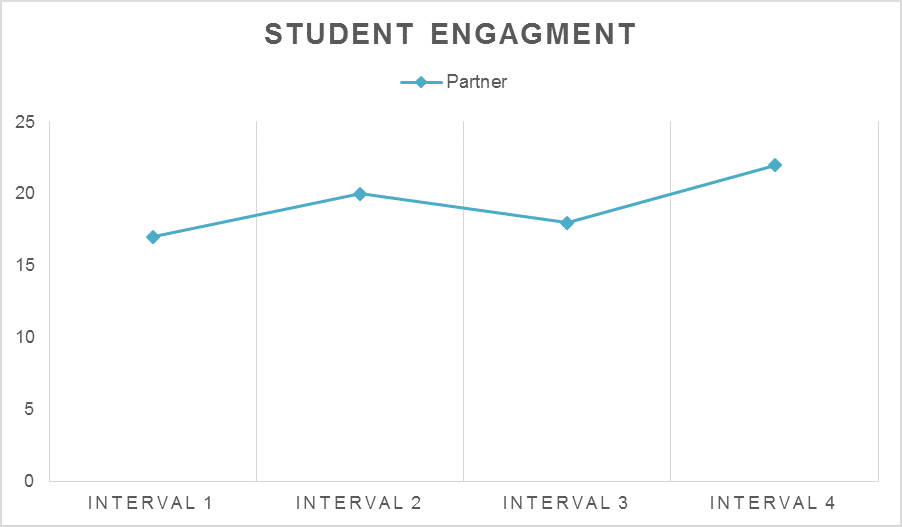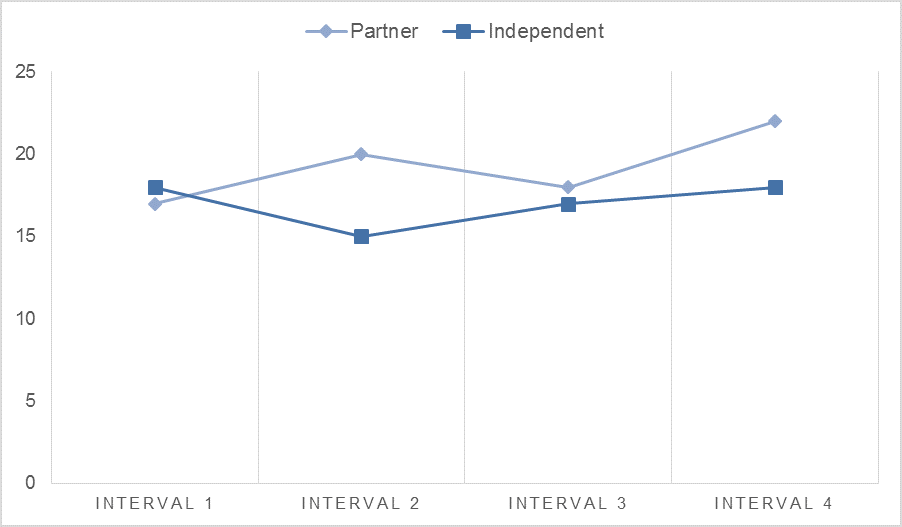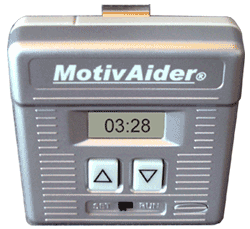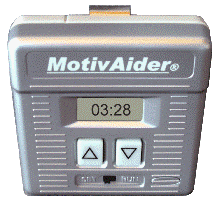We’re thrilled to bring you this exclusive article written by Steve Levinson, PhD, Inventor of the incredible MotivAider. We’re all familiar with the incredible versatility of the MotivAider in facilitating behavior changes and here, Dr. Levinson explains how behavior modification works. We’re so grateful to Dr. Levinson for this fantastic article. You can find more exclusive articles from leading experts in the field in our new catalog.
Prompting Behavior Change by Steve Levinson, PhD
If you’re a parent or a teacher who’s trying to change a child’s behavior, you’re probably frustrated. It’s not easy to change a child’s behavior. But before you blame the child, consider this: It’s not all that easy to change your own behavior either! Even when you have a good reason to make a particular change, and you’re really serious about doing it, changing your own behavior is rarely a snap.
Why it’s so hard to change behavior So, what makes it so hard to change behavior? If you think it’s simply a matter of motivation, think again. Motivation is certainly important, but many behavior change attempts fail not because of insufficient motivation. They fail because of insufficient focus.
You can’t change your own behavior unless you can keep your attention focused on making the desired change. While it’s easy to do things the old way because the old way is automatic, doing things the new way requires focus.

Unfortunately, whether you’re a parent, a teacher or a child, it’s not easy to stay focused. That’s because, amazingly, the human mind has no built-in mechanism to keep our attention focused on making the changes we want to make. So it’s really no wonder that our good intentions keep getting lost in the shuffle.
If you’re not convinced that (1) focus is an essential ingredient in the recipe for behavior change and (2) we’re not well-equipped to stay focused on the changes we want to make, here’s an example that should help. Suppose you have a bad habit of slouching. You realize that slouching is not only bad for your back, it’s bad for your image. So you promise yourself that from now on that you’ll sit up straight and stand up tall. How hard could that be? Yet soon—very soon—after setting out to improve your posture, you’re right back to slouching.
So, what happened? Did you lose your motivation? No. You lost your focus! You failed to make a change you genuinely wanted to make because you simply couldn’t keep your attention focused on making it.Yes, it’s hard to change behavior because changing behavior requires focus, and none of us—not parents, not teachers and especially not children—are particularly well-equipped to stay focused.
So what can we do to stay more focused on the positive changes we want to make? And what can we do to help our children or our students stay focused on the positive changes they want to make?
Prompting: A simple way to facilitate behavior change One solution is to use “prompting.” Prompting is a simple behavior change method that uses frequently repeated signals to keep your attention focused on making a desired change.
To illustrate how and why prompting works, let’s return to the posture example we used earlier. Only this time, after you promise yourself that you’ll sit up straight and stand up tall from now on, I’m going to follow you around and every few minutes—whether you’re slouching or not—tap you on the shoulder and whisper in your ear, “You’re no slouch.”
With me reminding you frequently, I guarantee that you’ll stay focused on improving your posture. What’s more, soon I’ll be able to stop whispering because just feeling the tap on your shoulder will be all it takes to send you the associated message, “Yes, I’m no slouch.” Sometimes when you feel the tap, you’ll find yourself slouching, and you’ll straighten up right away. Other times when you feel the tap, you’ll notice that your posture is already fine. It doesn’t matter whether you catch yourself slouching or you catch yourself with perfect posture. Either way, you’ll be making progress in replacing your bad posture habit with a good posture habit. Before long, you’ll automatically be sitting up straight and standing up tall.
Fortunately, there’s a more practical and even more effective way to use prompting. Instead of relying on a dedicated person to follow you around and keep tapping you on the shoulder, all you really need to implement basic prompting is a timer or other mechanical or electronic means that’s capable of sending you frequent private signals automatically. The process is simple. First, you devise a brief personal message that urges you to make the change you want to make. Then, you associate the personal message with the signal—the same way we associated “You’re no slouch” with a tap on the shoulder in the example above. The result is that whenever you receive the signal, you’ll focus your attention on making the change you want to make. And by making certain that you receive signals often enough, you’ll stay focused.
Prompting isn’t magic, but it can do amazing things. What’s more, because it allows us to overcome an obstacle that all of us—parents, teachers and children—share, it’s remarkably versatile. The same simple method that can be used to help a young child do a better job of staying on task can also be used to help parents and teachers consistently stick to an effective technique they forget to use when they’re busy or frustrated. The same simple method that can be used to help a child make a constructive keystone change in her social behavior can also be used to help parents and teachers stay cool, calm, collected, and constructive when interacting with a defiant child.
 Set a MotivAider for a predetermined interval (learn more about the MotivAider). The partner activity Ms. Esterman has organized will take a total of ten minutes. She decides to set the MotivAider for 2 minute intervals.
Set a MotivAider for a predetermined interval (learn more about the MotivAider). The partner activity Ms. Esterman has organized will take a total of ten minutes. She decides to set the MotivAider for 2 minute intervals.


 In this study, the researchers worked with a fifth grader with autism, a sixth grader with autism, and a fifth grader with cerebral palsy. They taught the boys to wear the MotivAider (calling it a pager) and note a + or a – to indicate their behavior each time the MotivAider vibrated. The behaviors they monitored were all related to being on-task: “eyes on my work,” “in my seat,” and “doing work.” Once each boy consistently rated his behavior upon feeling the vibration, the researchers implemented the intervention.
In this study, the researchers worked with a fifth grader with autism, a sixth grader with autism, and a fifth grader with cerebral palsy. They taught the boys to wear the MotivAider (calling it a pager) and note a + or a – to indicate their behavior each time the MotivAider vibrated. The behaviors they monitored were all related to being on-task: “eyes on my work,” “in my seat,” and “doing work.” Once each boy consistently rated his behavior upon feeling the vibration, the researchers implemented the intervention.
